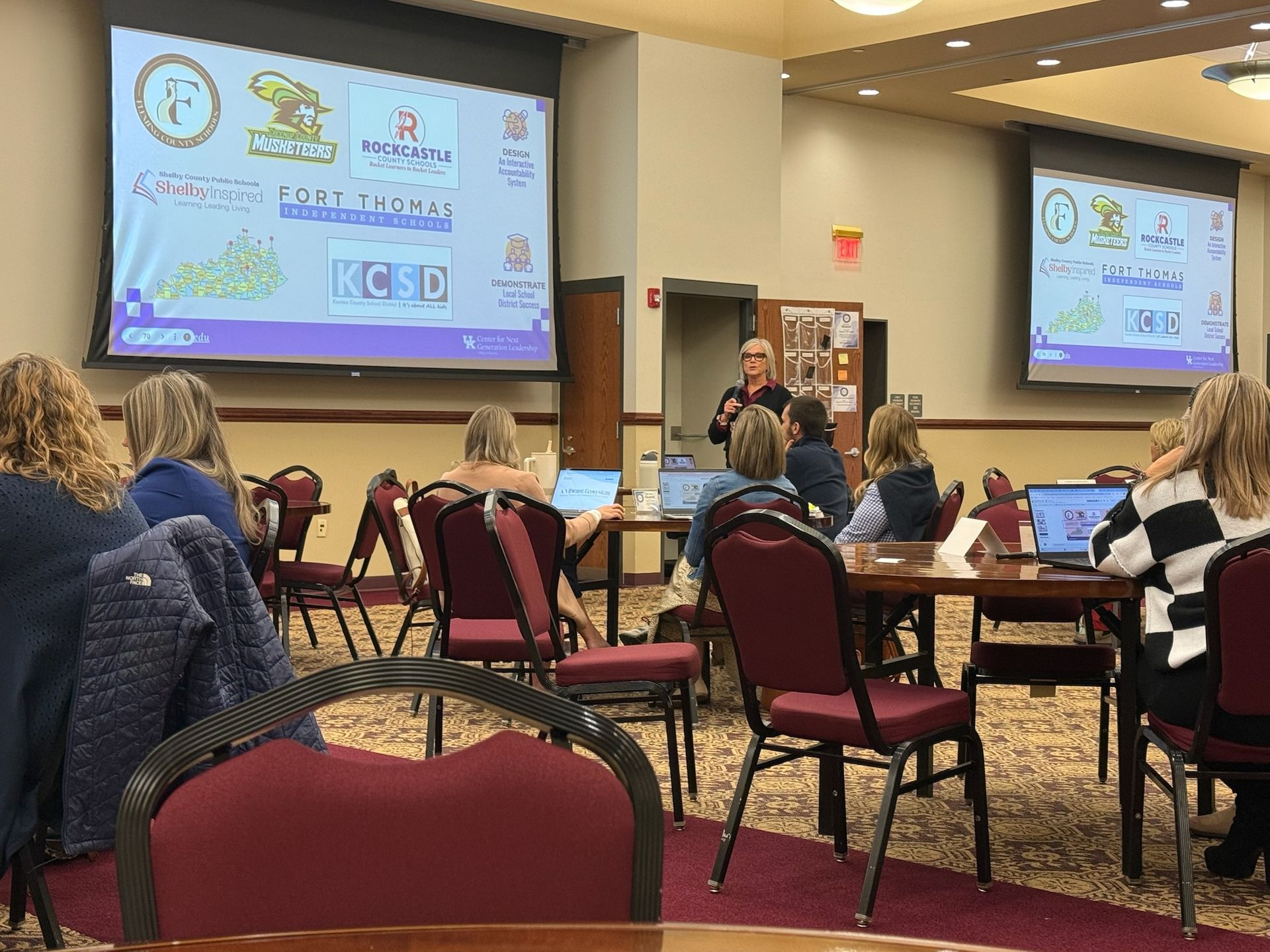
Last week at the UK Next Gen Leadership Academy, something small-but-mighty happened. In a room full of district leaders discussing “local accountability,” Susan Dugle highlighted the work happening across the state in this area. Who popped up on the screen? Our precious friends in Fleming County, of course! It reminded me of something we see over and over again: what districts call accountability is often just thoughtful visibility and storytelling.
And the best part? Most districts already have the pieces.
what if accountability starts with one communication habit?
During the academy, I led two communication sessions. In those sessions, I shared a simple prompt we often use with partners when the idea of communication becomes overwhelming.
What’s one communication rhythm, habit, or process that actually works in your organization?
It’s always fun to stump a room full of brilliant district leaders. The room paused... not because districts don’t have habits, but because they rarely name them out loud!
But naming is where everything changes.
When leaders identified the simple things that already worked (a weekly principal email, a shared Google Doc of stories, a standing Monday rhythm), they were actually naming the first layer of visibility. The quiet systems that help everyone see the same picture at the same time.
And that’s the foundation of local accountability.
the ripple effect: how one rhythm becomes a system
We explored the “ripple map”, which is a simple tool our team created that helps leaders see how one small communication habit can scale into a system of alignment, trust, and coherence.
The map walks district and school leaders through:
- Direct impact: What happens right away?
- System impact: What other workflows start depending on this?
- Cultural impact: How does consistency shape trust and identity?
- External impact: How do families experience it?
This is the part when the room starts buzzing because district leaders suddenly saw accountability as something they already touch every day. Not a dashboard. Not a binder. Not a compliance report.
A rhythm.
A single steady beat that other systems eventually align around.
In this presentation, I used a fun example from Bullitt County Public Schools to showcase how a simple shared Google Doc evolved into a districtwide storytelling ecosystem with measurable cultural and external impact. Fleming County’s story sits in the same lineage: small structures becoming systems of trust.
behind the scenes with UK Next Gen: why Fleming County’s model resonates
When Susan lifted up Fleming County, it wasn’t because of a spreadsheet or a scorecard.
It was because they’ve built a model of local accountability grounded in:
- Clarity
- Visibility
- Storytelling
- Ownership across roles
Which aligns directly with the “operationalizing what works” framework we walked through: moving from intuition → intention → implementation.
And that’s the part most districts miss.
Local accountability isn’t built by adding more.
It’s built by designing around what’s already working.
The moment Fleming County was featured, it became clear: their systems don’t just measure learning. They make the learning visible.
the real truth: accountability is communication
The more we partner with districts, the more this becomes undeniable:
Accountability is not a document.
It’s a rhythm.
A habit.
A way of seeing.
And most importantly:
What districts call “accountability” is often just thoughtful visibility and storytelling.
When you create structures that help people see what’s happening (consistently, clearly, and humanly), you don’t have to force accountability.
It emerges.
want to map your district’s “one rhythm”?
If you want help identifying your district’s natural communication heartbeat and how it could evolve into a full local accountability system: let’s talk.








